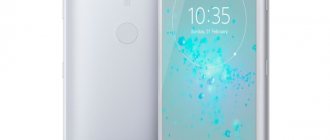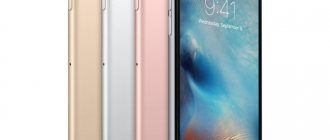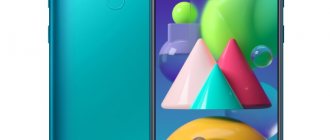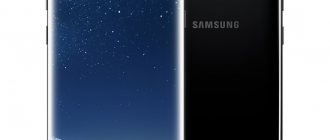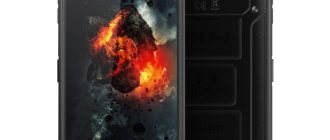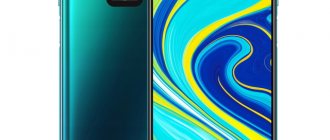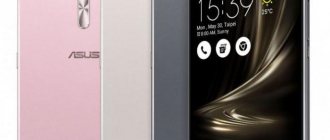The pop-up front camera has become a unique innovation that many manufacturers have seized on. It made it possible to make the frameless display intact, without a cutout.
This, in turn, attracted users because they would have a picture that was not distorted even by a small protrusion that could be occupied by a teardrop-shaped front camera.
Over time, several technologies have emerged to extend the camera and protect it from damage in the event of a fall. Each manufacturer tried to improve the process to achieve the ideal.
This selection includes the best models that have this feature.
Xiaomi Mi 9T 6/64GB
You can't just pass by the Xiaomi Mi 9T, which uses a pop-up front camera. Thanks to this implementation, the 6.39-inch diagonal screen occupies almost the entire area of the front panel. By the way, the smartphone looks very unusual - thanks to the bright back cover.
This is not a flagship yet, but, as they say, almost, and it is relatively inexpensive. Xiaomi Mi 9T impresses with a powerful processor (Qualcomm Snapdragon 730 + 6 GB of RAM), a powerful 4000 mAh battery, an excellent main triple camera, a gorgeous AMOLED display, and a fingerprint scanner built into the display.
- Screen diagonal: 6.39 inches
- Screen resolution: 2340×1080
- Weight: 191 g
- Number of SIM cards: 2
- Processor: Qualcomm Snapdragon 730
- Memory capacity: 64 GB
- RAM capacity: 6 GB
- Battery capacity: 4000 mAh
- Rear camera: triple 48/8/13 MP
- Front camera: 20 MP
- Memory card support: yes
Smartphones with pop-up cameras: all other models
Above, we examined those models of smartphones with retractable cameras that, at the time of writing, could easily be found on sale in Russia. This section, in turn, lists all the other models with retractable front panels that have been released in recent years. Finding them on sale is more difficult, but still possible:
- Asus Zenfone 6 is the flagship of Asus 2022, equipped with a retractable camera, which, thanks to a special mechanism, can be either the main one or the front one. The device also pleasantly surprises with its 5000 mAh battery. This model is noticeably inferior to the current Zenfone 7 both in cameras (two instead of three) and screen (IPS instead of OLED);
- Honor X10 is a powerful but inexpensive smartphone, which never reached our country due to US sanctions against Huawei/Honor. Uses the Kirin 820, which is vastly superior to the Kirin 710, as well as a 40 MP main camera. The latter relies on a particularly large sensor, previously found in flagship Huawei smartphones. The device also has an IPS display operating at a frequency of 90 Hz instead of the usual 60;
The reversible retractable camera mechanism in the Asus Zenfone 6 works very quickly. In Zenfone 7 (2020), the motor has become even more powerful, and there are already three cameras in the unit
- Huawei Y9 Prime 2019 is almost identical to the above-mentioned P Smart Z, the only important difference is the third rear camera module (ultra-wide-angle lens with a resolution of 8 MP);
- Huawei Enjoy 10 Plus is almost a copy of the Y9 Prime 2019, but is notable for the use of a 48 MP main camera instead of 16;
- Huawei P Smart Pro 2022 (aka Y9s) – in turn, is similar to Enjoy 10 Plus. The main difference is the fingerprint scanner is on the side, not the back. In general, this and the two other Huawei devices listed above, having the same displays, processor and batteries, differ mainly in cameras. For a more clear picture of the differences between them, see the table below;
- Huawei Y9a is a new model from 2022, unfortunately, it has not reached Russia. It belongs to the inexpensive budget segment, but is curious with its design in the style of the Huawei Mate flagships and the main camera with a resolution of 64 megapixels. Processor – Helio G80 should be slightly more powerful than Kirin 710;
The Huawei Y9a and Enjoy 20 Plus smartphones are very inexpensive in price, but they received a design in the style of the Mate 30 - Huawei 2019 flagships
- Huawei Enjoy 20 Plus – visually the model is very similar to the Y9a, but the hardware is different. The processor and display are better here. A very powerful MediaTek Dimensity 720 is used, and the IPS screen operates at 90 Hz. The camera, on the contrary, has been simplified: the resolution of the main module has been reduced from 64 to 48 megapixels, one of the auxiliary (2 megapixel) cameras has also been removed;
- Infinix S5 Pro is a series of three budget smartphones from the Infinix brand. All have a pop-up front camera, a 6.53'' IPS screen, a simple Helio P35 processor, a 4000 mAh battery and three rear cameras. They differ in the resolution of the main rear and front cameras. For the basic model it is 48+16 megapixels. However, there are two other versions with a focus on selfie lovers: 16+32 MP and the most advanced – 48+40 MP;
- The LG Wing is probably the most unusual smartphone on our list. It has two OLED displays (6.8 and 3.9''), one of which rotates above the other. At first glance, this may seem crazy, but LG has found a number of scenarios in which such a division is really convenient, especially since when folded the device turns into a regular smartphone with a 6.8'' screen and above-average hardware;
LG Wing has something to surprise you besides the retractable camera
- Lenovo Legion – under the Legion brand, Lenovo has been producing various gaming equipment for a long time, now the turn has come for a gaming smartphone. The new product turned out to be extremely powerful. The gadget has an impressive cooling system that allows the SD865 processor to better reveal its performance. And for the first time, the retractable front camera is made from the side so as not to interfere with the comfortable grip of the smartphone;
- Motorola One Hyper is the first Motorola device with a retractable camera (32 MP). One of the first gadgets with a 64 MP rear camera. Based on Snapdragon 675. Notable for its original notification indicator around the fingerprint scanner on the back;
- Motorola One Fusion+ is the second gadget, released in 2022. It is a strong representative of the mid-range, relying on a very powerful Snapdragon 730 processor. Compared to the One Hyper, the front camera resolution has been reduced to 16 megapixels, but two more auxiliary ones have appeared at the back: 2 and 5 megapixels , which will keep company with the main (64 MP) and ultra-wide-angle camera (8 MP);
- OnePlus 7 Pro is an impressive bezel-less flagship with a pop-up camera. It has an outstanding OLED display with curved sides and a refresh rate of 90 Hz. It is also notable for its wide f/1.6 aperture for the main 48 MP camera. It is models like this that allow BBK, which is behind OnePlus, to strengthen its position in the ranking of smartphone brands;
OnePlus 7 Pro made a lot of noise back in 2022. Retractable camera, curved screen, 90 Hz, HDR10+ support - quite good even for 2020
- OnePlus 7T Pro is a minimally improved version of OnePlus 7 Pro. It is distinguished by the use of Snapdragon 855 Plus instead of the base 855, a symbolically increased battery capacity and noticeably faster charging. Video recording capabilities have also been improved;
- Oppo F11 Pro is a relatively affordable smartphone option with a pop-up front camera made by Oppo (6.53'' IPS, 48+5 MP, Helio P70, 4000 mAh). It was presented back in the spring of 2019, but, like many other smartphones from this list, it never officially arrived in Russia;
- Oppo K3 – Compared to the F11 Pro, it is notable for its OLED screen, in-screen scanner, more powerful processor and USB-C. However, it lacks a 48 MP rear camera and support for memory cards. It also didn’t reach Russia;
- Oppo Reno is a powerful smartphone that opened the current key Oppo line. Equipped with a non-standard retractable camera located in a block similar to a shark fin;
The very first Oppo Reno
- Oppo Reno 10x zoom is Oppo’s previous flagship, an enhanced version of the basic Oppo Reno. A similar pop-up camera in the shape of a fin. Notable for the world’s first five-fold optical zoom implemented in a smartphone at the time of the device’s announcement (10x – hybrid, 60x – digital);
- Oppo Reno 2 F is the most simplified and affordable version of Reno 2, featuring a relatively weak Helio P70 processor. It also has a rectangular block for the front camera instead of the “fin” of other representatives of the line;
- Realme X is a brightly colored device in the line of the young Realme brand, created by BBK to compete with Xiaomi Redmi. The gadget has an OLED display (6.53''), Snapdragon 710, a 48+5 MP main camera, and a 3765 mAh battery. Unfortunately, this is the first and only Realme model with a pop-up camera so far;
- The Samsung Galaxy A80 is an original, powerful high-end smartphone in which the rear part extends (however, it is not a slider), and the camera block can be flipped on both sides, like the Asus Zenfone 6 and 7. The Galaxy A80, among other things, is interesting in using a time-of-flight camera that improves photo bokeh effect and more;
Galaxy A80 rotating camera demonstration
- Tecno Camon 15 Premier is a budget smartphone, a close “relative” of the Tecno Camon 15 Pro mentioned in the first part of the article. This model features a main camera with a resolution of 64 megapixels instead of 48. It also has four LEDs in the flash module instead of two;
- Umidigi S5 Pro - a smartphone from the Chinese Umidigi, released in 2022, stands out among its inexpensive competitors by using an OLED display, as well as the Helio G90T processor - the most powerful in the Helio line (however, it is far from the Snapdragon flagships);
- Vivo NEX A is, along with NEX S, the first smartphones to start the pop-up front camera trend. The only devices on the list are from 2022. However, their characteristics are still generally relevant;
The pop-up camera in Vivo NEX A and S set an example for everyone else
- Vivo NEX S (came to the Russian Federation as simply “NEX”) – differs from NEX A by having a fingerprint scanner integrated into the display and a significantly more powerful Snapdragon 845 instead of 710;
- Vivo NEX 3 is a powerful 2022 flagship with an enhanced Snapdragon 855+ on board. One of the first devices with a main rear camera with a resolution of 64 megapixels. One of the first two devices on the market with a waterfall screen (rounded on the side edges at an angle of almost 90 degrees, visually completely removing them). Retractable camera – 16 megapixels is also complemented by a flash;
- Vivo NEX 3S is a version of NEX 3 with enhanced hardware components. Compared to the original, the modification switched from Snapdragon 855+ to 865, received fast LPDDR5 RAM, UFS 3.1 permanent memory, support for Wi-Fi 6 (ax), as well as NFC and Bluetooth 5.1;
This is what Vivo NEX 3 and 3S look like. The waterfall screen creates the feeling of a complete absence of side frames. The future successor to these models is included in the list of the most anticipated smartphones
- Vivo V15 is a very simple version of Vivo smartphones with a retractable camera of the 2022 model. The front camera resolution is 32 megapixels. There is also an IPS display and a scanner on the back, the main camera is “only” 24 megapixels, and the “heart” is not the worst, but still modest Helio P70;
- Vivo V15 Pro (aka S1 Pro) - unlike the regular V15, this model already uses a 6.39'' OLED screen, has an in-screen scanner, Snapdragon 675 instead of Mediatek Helio P70 and three rear camera modules, including a 48 MP main one;
- Vivo V17 Pro is notable for its dual retractable camera. One is regular - 32 MP, the other is an ultra-wide-angle 8 MP, designed for capturing large scenes. The device is based on the Snapdragon 675, but compared to the V15 Pro it has a slightly larger display, a capacious battery, and a telephoto camera on the back;
Dual pop-up camera in Vivo V17 Pro. Photo by Android Authority
- Vivo X27 – due to a more powerful processor (Snapdragon 710), it cost a little more than the V15/V17 models, but the X27, like its Pro version, was not sold in Russia;
- Vivo X27 Pro - like NEX 3, is interesting due to the presence of an LED flash, which is built into a block with a retractable front camera, and the resolution of the latter is not 16, but 32 megapixels. It also differs from the X27 in its larger display;
- Xiaomi Mi 9T (K20) is the first Xiaomi smartphone with a retractable camera. In China they are known as Redmi K20. Even the base model stood out at the time of announcement due to its strong, almost flagship specifications and original rear panel design;
- Xiaomi Mi 9T Pro (K20 Pro) is an enhanced version of the Mi 9T in terms of processor: instead of the Snapdragon 730, the flagship Snapdragon 855 is used. It also supports faster charging;
In addition to the retractable camera, the Mi 9T models are notable for their very unusual body colors
- Xiaomi Redmi K30 Pro Zoom is a camera-enhanced version of the Redmi K30 Pro (this model in Russia is known as Poco F2 Pro). The differences are support for 3x optical zoom and the presence of optical stabilization for the main camera;
- Xiaomi Redmi K30 Ultra is an enhanced version of Redmi K30 Pro in terms of display and sound. Uses an OLED screen with a 120Hz refresh rate and stereo speakers. The flagship Snapdragon has been replaced by a flagship Mediatek processor, which is a controversial "improvement". Just like the above-mentioned K30 Pro Zoom model, the Redmi K30 Ultra has not officially appeared in Russia.
Xiaomi Poco F2 Pro 6/128GB
The flagship smartphone of the Poco line from Xiaomi. A relatively inexpensive but interesting device.
To save money, the manufacturer did not use water protection or wireless charging, but fast, for example, is available. The AMOLED display is good, but the maximum refresh rate is 60Hz. But there is no saving on power: the Qualcomm Snapdragon 865 chipset and 6 GB of RAM in this version provide a large performance reserve. For an inexpensive flagship, the Poco F2 Pro takes good pictures, although primarily during the day.
As for the retractable front camera, it also received a notification indicator.
- Screen diagonal: 6.67 inches
- Screen resolution: 2400×1080
- Weight: 219 g
- Number of SIM cards: 2
- Processor: Qualcomm Snapdragon 865
- Memory capacity: 128 GB
- RAM capacity: 6 GB
- Battery capacity: 4700 mAh
- Rear camera: four modules 64/13/5/2
- Front camera: 20 MP
- Memory card support: no
ASUS ZenFone 7 Pro ZS671KS 256GB
ASUS used a camera module similar to last year’s model: one camera, which, if necessary, using a special mechanism, rises above the body and allows you to take selfies (in normal mode, you take pictures like with a regular smartphone camera).
A flagship smartphone with a top-end Qualcomm Snapdragon 865 Plus chip, a gorgeous AMOLED display and a very decent camera.
Interestingly, this model does not have wireless charging, nor is it waterproof. Otherwise, the smartphone is very interesting.
- Screen diagonal: 6.67 inches
- Screen resolution: 2400×1080
- Weight: 230 g
- Number of SIM cards: 2
- Processor: Qualcomm Snapdragon 865 Plus
- Memory capacity: 256 GB
- RAM capacity: 8 GB
- Battery capacity: 5000 mAh
- Rear camera: triple 64/12/8 MP
- Memory card support: yes
Lenovo Legion Pro
- Processor: Qualcomm Snapdragon 865 Plus
- Screen: 6.65 inches, resolution 2340 x 1080, 144 Hz
- Cameras (main / front): 64 + 16 MP / 20 MP
- Memory (RAM / built-in): 8/128, 12/128, 12/256 or 16/512 GB
- Battery capacity: 5000 mAh
Price: from 37,400 rubles
As you can understand from the list of characteristics, and just by looking at the appearance, Lenovo Legion Pro is a toy for gamers. In addition to powerful hardware, the model received a capacious battery and a screen with a refresh rate of 144 Hz to make playing even more comfortable and the system not turning off at the most inopportune moment.
There are two main cameras here: a main sensor with a resolution of 64 MP and a wide-angle module of 16 MP. The 20 MP front lens of the Samsung S5K3T1 was hidden in a small pop-up mechanism. Given this original location, Legion Pro can rightfully be called one of the most unusual devices. Compared to DSLRs, the quality will be poor, but in general, for a gaming smartphone, the model produces very attractive photos in most cases.
Lenovo Legion Pro received an overclocked version of Snapdragon 865 with the “Plus” label as a processor. In benchmarks, the model outperforms 95% of all mobile devices based on other single-chip devices. The amount of memory is also amazing: up to 16 GB of RAM and 512 GB of internal memory of the latest types LPDDR5 and UFS 3.1, respectively. In general, you can play on this system for a very long time. The battery will last for a long time, and if it runs out, the 90 W adapter will replenish the energy as quickly as possible.
Advantages:
- Long working time.
- Fast charging with a power of 90 W.
- There is support for NFC, 5G, Wi-Fi 6.
- Low cost (including filling).
- Screen: Corning Gorilla Glass 6, AMOLED, 144 Hz.
- Stereo sound and double vibration motor.
Flaws:
- Not found.
Buy
Honor 9X 4/128GB
A smartphone from Honor, which also received a retractable front camera. We recommend looking at the blue version - this is where the device looks the most interesting.
Honor 9X received a 6.59-inch matrix, the well-known HiSilicon Kirin 710 chipset, 4 GB of RAM and 128 GB of main memory, a 4000 mAh battery with support for fast charging, NFC, and a fingerprint sensor on the back.
The rear camera is double, the resolution of the main module reaches 48 MP.
- Screen diagonal: 6.59 inches
- Screen resolution: 2340×1080
- Weight: 197 g
- Number of SIM cards: 2
- Processor: HiSilicon Kirin 710
- Memory capacity: 128 GB
- RAM capacity: 4 GB
- Battery capacity: 4000 mAh
- Rear camera: dual 48/2 MP
- Front camera: 16 MP
- Memory card support: yes
Battery life
Thanks to the included charger for as much as 5A and proprietary VOOC fast charging technology, the device can be charged from zero to 100% in about an hour. The battery will be charged 60-70 percent in just 30-40 minutes. An unprecedented result, even by modern standards.
The negative point is that if you forget the included charger, then any other charger, even with a current of 2A, will charge the device for about 5-6 hours. An indecent amount.
As for the lifespan of the device, it does not exceed one or two days of battery life during normal operation of the device. In this regard everything is very standard.
Moreover, at this year's MWC 2016 the company demonstrated impressive results of its new SuperVOOC technology. The bottom line is that it allows you to charge your smartphone to capacity in just 15 (!!!) minutes. We are talking about a regular 2500 mAh battery and regular Micro USB or USB Type-C connectors. The future is near, gentlemen!
Honor 9X Premium 6/128GB
The Honor 9X Premium is the same as the Honor 9X, but some may notice the differences.
The first is a larger amount of RAM (6 GB rather than 4 GB). Secondly, in the main camera you can find another module, this is a “shirik” with a resolution of 8 MP. Finally, the Premium version... Lost the NFC module! Unusual, but it's true.
There are no other differences.
- Screen diagonal: 6.59 inches
- Screen resolution: 2340×1080
- Weight: 197 g
- Number of SIM cards: 2
- Processor: HiSilicon Kirin 710
- Memory capacity: 128 GB
- RAM capacity: 6 GB
- Battery capacity: 4000 mAh
- Rear camera: triple 48/8/2 MP
- Front camera: 16 MP
- Memory card support: yes
TECNO Camon 15 PRO
- Processor: 8-core Helio P35, clock frequency 2.35 GHz
- Screen: 6.6 inches, resolution 2340 x 1080
- Cameras (main / front): 48 + 5 + 2 + 0.3 MP / 32 MP
- Memory (RAM / built-in): 6 GB / 128 GB
- Battery capacity: 4000 mAh
Price: from 15,990 rubles
Camon 15 Pro is not just a smartphone with a pop-up camera, but a device that truly attracts attention. It has a stylish appearance with a slight gradient shimmer that looks organic and not too bright.
The rear camera consists of four lenses. A 5 MP wide-angle module and a 2 MP module for macro photography were added to the main 48 MP sensor; the latter sensor is responsible for AI modes and helps in photo processing. It is worth noting that the camera here takes excellent pictures and will satisfy the needs of even very demanding users. This is facilitated by numerous modes with intelligent scenarios. The 32 megapixel front camera slides out of the body; it will also please you with the quality of the photos.
Everything about the phone is fine with other parameters - a powerful processor, a lot of memory, a triple slot, a headphone jack, as well as protection in the form of a fingerprint and face unlock. The display has a high resolution and good brightness, and it is also covered with Asahi Glass. The battery is quite standard - 4000 mAh, it is enough for a working day, however, the proprietary HiOS shell has many interesting features, including for optimizing battery consumption.
Advantages:
- Premium appearance.
- Excellent photo opportunities.
- Lots of memory.
- Good performance.
- Non-combined slot.
Flaws:
- No NFC.
OnePlus 7 Pro 8/256GB
OnePlus 7 was launched in two versions - regular and Pro. The latter is interesting to us because it received a retractable front camera.
OnePlus 7 Pro is one of the most powerful smartphones in the world, which has been proven more than once by various tests. By the way, a version with 12 GB of RAM is available for sale!
The display diagonal reaches 6.67 inches and it is, of course, AMOLED. The chip used is the most powerful Qualcomm Snapdragon 855. Users note excellent cameras, very fast charging, a separate vibration mode switch, decent autonomy, and an unrealistic performance reserve.
- Screen diagonal: 6.67 inches
- Screen resolution: 3120×1440
- Weight: 206 g
- Number of SIM cards: 2
- Processor: Qualcomm Snapdragon 855
- Memory capacity: 256 GB
- RAM capacity: 8 GB
- Battery capacity: 4000 mAh
- Rear camera: triple 48/8/16 MP
- Front camera: 16 MP
- Memory card support: no
OnePlus 7T Pro 8/256GB
And this is an updated version of OnePlus 7 Pro, which received a barely noticeable T prefix. And this is logical, because the changes between smartphones are small.
The design is almost identical, the only difference is the new shades. The main changes are hidden inside: an even more powerful Qualcomm Snapdragon 855 Plus chip, even faster charging, support for new modes in the main triple camera, including macro photography with a distance of only 2.5 cm, as well as support for night mode on the ultra-wide-angle module.
But the cost of the 7T Pro version is higher, which is logical.
- Screen diagonal: 6.67 inches
- Screen resolution: 3120×1440
- Weight: 206 g
- Number of SIM cards: 2
- Processor: Qualcomm Snapdragon 855 Plus
- Memory capacity: 256 GB
- RAM capacity: 8 GB
- Battery capacity: 4085 mAh
- Rear camera: triple 48/8/16 MP
- Front camera: 16 MP
- Memory card support: no
Fingerprint's scanner
Approximately in the center there is a fingerprint sensor, which doubles as a button. About the same as in the LG G5. To “wake up” the device and activate fingerprint reading, you need to press the sensor. Like the iPhone or Samsung Galaxy S7.
Overall it works well, unlocking the device in one go. Reading speed up to a second.
But the metal rim around the scanner is quite loose. I checked it on a couple of other exhibition specimens - everything is the same. This means that this is a feature of the model as a whole, and not of a specific sample.
The sensor is responsible either for blocking the device only, or for blocking individual applications, or for both at the same time. Everything is configured from the menu.
Xiaomi Mi 9T Pro 6/128GB
Essentially the same Mi 9T, but much cooler (and more expensive, of course).
Don't look for external differences, they simply aren't there. The exception is the cool new shade of white. But the processor is a real flagship, Qualcomm Snapdragon 855, which in this version works together with 6 GB of RAM and 128 GB of ROM.
There are changes in the rear camera, but they are difficult to notice - instead of the main Sony IMX582 module, Sony IMX586 is used. Among the additional features, the Pro version can shoot video in 4K 60 frames per second versus 30 frames per second.
In general, an interesting analogue of the flagship Mi 9, but with a retractable camera.
- Screen diagonal: 6.39 inches
- Screen resolution: 2340×1080
- Weight: 191 g
- Number of SIM cards: 2
- Processor: Qualcomm Snapdragon 855
- Memory capacity: 128 GB
- RAM capacity: 6 GB
- Battery capacity: 4000 mAh
- Rear camera: triple 48/8/13 MP
- Front camera: 20 MP
- Memory card support: no
Comparison table of smartphones with retractable front cameras
Let’s summarize all the listed smartphones with a retractable camera with one large comparative table of their characteristics (the table contains all devices, without exception, from both the first and second sections of the article):
The main characteristics and differences of all phones with retractable cameras. At the moment we have counted 45 models. They are all in this table (there is also a table above in the article containing only current models)
Explanations and additions to the table:
- Leaders in display quality. We include smartphones that combine an OLED display and a high refresh rate (90 Hz or more instead of the standard 60 Hz). There are six similar gadgets in the table: the flagships Asus Zenfone 7 and 7 Pro, the gaming Lenovo Legion, the flagships OnePlus 7 Pro and 7T Pro, as well as the Xiaomi Redmi K30 Ultra;
- Leaders in diagonal and display shape. Vivo NEX 3 and 3S. Their 6.89'' screen is the largest of all on the list. However, the width is an acceptable 76 mm. NEX 3 and 3S are the first and only such gadgets in the list, equipped with the so-called waterfall screen. The display is curved far to the side edges and almost at a right angle. Visually, this completely erases the frames on the side, and in combination with the retractable camera on top it looks completely futuristic;
- The best front cameras. Zenfone 6, 7 and 7 Pro, Galaxy A80, Vivo 17 Pro. Unusual rotating mechanisms allow ZenFone 6/7 and Galaxy A80 to use the same set of the most advanced cameras both as main and front ones. In turn, Vivo 17 Pro offers a retractable unit with 32 and 8 megapixel cameras (the second acts as an ultra-wide-angle);
- They have a flash for the selfie camera. Flash next to the pop-up camera is available on Asus Zenfone 6, 7/7 Pro, Galaxy A80, Vivo NEX 3/3S, Vivo X27 Pro and Lenovo Legion;
Flash for the front camera in Vivo NEX 3
- The best main camera. The key and mandatory attribute here is the presence of optical stabilization. Experienced users know that it is needed not only to get rid of shaking. If we put aside the old NEX A and S from Vivo, then from the entire list only Asus Zenfone 7 Pro, OnePlus flagships, the non-standard LG Wing, early Oppo Reno models (the series started out as flagship, but has now become mid-range) and Xiaomi Redmi K30 Pro Zoom.
- Best in optical zoom. Oppo Reno 10x zoom is the only device on the list that not only has optical zoom (lossless), but is also capable of zooming in 5 times in this way. The device also has a hybrid zoom (tenx) and digital, with the latter supporting 60x magnification. Alas, this model is now almost impossible to find on sale;
Note the bottom square chamber. This is also a periscope, only hidden inside the smartphone. Five-fold optical zoom is achieved due to the large difference in focal length with the main lens
- The best in terms of processor. Snapdragon 855 and 865 are the most powerful processors for gadgets in our table. They are the “heart” of all Asus and OnePlus flagships, the gaming Lenovo Legion, the aforementioned Oppo Reno 10x zoom, the Vivo NEX 3 and 3S flagships, as well as three of the five Xiaomi smartphones presented on the list. By the way, it is powerful processors, among other things, that allow almost all of these devices to record 4K video at 60 FPS;
- The leaders in battery capacity are smartphones with a 5000 mAh battery. There are five such models in the table: three Asus flagships, as well as Lenovo Legion and Motorola One Fusion+.
Xiaomi Mi Mix 3 6/128GB
Xiaomi Mi Mix 3 has a slider body: slide the body halves apart to reveal the front camera. Yes, there is no automatic retractable mechanism here, but the process itself is extremely simple and even familiar.
Xiaomi Mi Mix 3 is offered in several color shades, and these are discreet colors. The device turned out to be quite weighty - 218 g. It uses a 6.39-inch display with a high resolution of 2340x1080 pixels, an excellent dual main camera, the flagship Qualcomm Snapdragon 845 chip, 6 GB of RAM. There is not only fast charging, but also wireless.
The fingerprint sensor, as is fashionable, is located in the display.
- Screen diagonal: 6.39 inches
- Screen resolution: 2340×1080
- Weight: 218 g
- Number of SIM cards: 2
- Processor: Qualcomm Snapdragon 845
- Memory capacity: 128 GB
- RAM capacity: 6 GB
- Battery capacity: 3200 mAh
- Rear camera: dual 12/12 MP
- Front camera: dual 24/2 MP
- Memory card support: no
Features of pop-up cameras in smartphones
In most devices, the pop-up camera is represented by a miniature, square module. Some manufacturers supplement it with various auxiliary functionality. For example, Vivo added an LED flash to the NEX 3, 3S and X27 Pro models, and a second module to the V17 Pro.
In turn, in Xiaomi Mi 9T and 9T Pro the sliding block is backlit. And the Chinese Oppo, in some of its gadgets, has completely abandoned the retractable rectangle format, instead making a retractable “fin” with a camera and additional elements.
In Xiaomi Mi 9T and 9T Pro, the retractable camera also has an LED backlight. Xiaomi reports that the mechanism operates in less than a second. You can also set any sound for the camera to appear.
Lenovo in its powerful gaming smartphone Legion not only supplemented the retractable front camera with a flash, but also for the first time moved it to the side of the smartphone so that the emerging camera does not interfere with the comfortable grip of the device.
Finally, Asus in the Zenfone 6/7 and Samsung in the Galaxy A80 made unique flip-over camera blocks. This mechanism allows you to use the most powerful cameras not only on the back side, but also as front modules for selfies and other things.
In the seventh version of Zenfone, Asus developers even taught the smartphone to control the position of this rotating camera module with an accuracy of 0.5 degrees. Thus, the user can now make this block “hover” in the most convenient position for shooting.
Zenfone 7 allows you to precisely adjust the position of the retractable camera unit
Note that our short review did not include technological sliders, which, like smartphones with a retractable front camera, achieve framelessness due to the retractable part. Only it’s not a small block that moves there, but the entire back panel. The fashion for such sliders suddenly arose in 2022 and then almost ended. Let's note the key models:
- Oppo Find X;
- Honor Magic 2 and Magic 2 3D;
- Lenovo Z5 Pro and Z5 Pro GT;
- Xiaomi Mi Mix 3.
Honor Magic 2 and Magic 2 3D as an example of new generation sliders
All these sliders, interestingly, belong to the premium segment, so even in 2022 their price tag may be an unpleasant surprise.
That's all we have for now. We will update this material, adding new smartphones and information.
- about the author
- Recent publications
Raik
Igor Andreev is the author of articles for ITRew.ru and Our-Firefox.ru. I am passionate about modern technologies, I talk about them in my texts) Follow me — twitter.com
Raik recently posted (see all)
- Clock error: sites do not open in Chrome and Opera (solution) - 10/01/2021
- All the differences between Apple Watch 7 and Watch SE, 6 and 3 - 09/17/2021
- iPhone 13 and 13 Pro vs iPhone 12 and 12 Pro: all the differences - 09/16/2021
Tell others:
- Click to share on Twitter (Opens in new window)
- Click here to share content on Facebook. (Opens in a new window)
- Click to print (Opens in new window)
- Click to share on Pinterest (Opens in new window)
- Click to share on Telegram (Opens in new window)
- Click to share on WhatsApp (Opens in new window)
Huawei P smart Z 4/64GB
In the class of inexpensive smartphones, retractable cameras are still rare, but they do occur - Huawei P smart Z is proof of this.
The smartphone has a fairly large display - 6.59 inches diagonal with a resolution of 2340x1080 pixels. It uses a 4000 mAh battery, a proprietary HiSilicon Kirin 710 processor, 4 GB of RAM, and a dual main camera. The fingerprint scanner is located on the back of the case.
The smartphone is inexpensive, so don’t expect miracles: the camera takes good pictures during the day, but not at dusk, and the back cover is made of plastic. Considering the price, this is more than ok.
- Screen diagonal: 6.59 inches
- Screen resolution: 2340×1080
- Weight: 197 g
- Number of SIM cards: 2
- Processor: HiSilicon Kirin 710
- Memory capacity: 64 GB
- RAM capacity: 4 GB
- Battery capacity: 4000 mAh
- Rear camera: dual 16/2 MP
- Front camera: 16 MP
- Memory card support: yes
Samsung Galaxy A80
Samsung decided to use an unusual solution: it made a retractable camera, and only one module is used - during the process of lifting the mechanism, the main camera module unfolds. At the same time, it was decided to abandon face unlocking - at the time of the smartphone’s release this function is not supported.
In addition to the large 6.7-inch screen, the Galaxy A80 received a powerful Qualcomm Snapdragon 730 chipset, 8 GB of RAM and 128 GB of internal memory, a 3700 mAh battery with support for fast charging, and NFC.
Users note the excellent appearance of the device, cool display, high system speed, and wonderful camera, especially when it comes to taking selfies.
- Screen diagonal: 6.7 inches
- Screen resolution: 2400×1080
- Weight: 220 g
- Number of SIM cards: 2
- Processor: Qualcomm Snapdragon 730
- Memory capacity: 128 GB
- RAM capacity: 8 GB
- Battery capacity: 3700 mAh
- Rear camera: dual 48/8 MP + ToF
- Front camera: dual 48/8 MP + ToF
- Memory card support: no
What it is
The retractable camera is a separate element of the gadget, which is hidden inside the body. Thus, you get a completely budget device with a stylish design. At the same time, the display is not blocked by additional elements; it lacks the iPhone’s “unibrow” and other attributes. The phone's cover is not cluttered with a lot of cameras. If you want to take a photo, you need to perform a series of commands, then the camera will automatically jump out of the gadget’s body using a special mechanism. In most cases, the manufacturer equips the front camera with this function.
Advantages:
- compact dimensions;
- ability to increase display size;
- cleaner look.
Despite the trend of retractable modules and the desire of manufacturers to equip their product line with such an option, such products also have disadvantages. After all, these are still experimental versions; accordingly, errors and shortcomings will be observed in these gadgets for a long time.
Flaws:
- Lack of protection against liquids – such models cannot be equipped with moisture protection. These are probably temporary disadvantages, and manufacturers will eliminate this point. But for now, users will have to exercise extreme caution.
- Inability to use a case - if you need to take a picture, the case will interfere with the moving lens. It is inconvenient to take it off every time, and not every user dares to walk without protection.
- The retractable mechanism gets clogged with dust and dirt - a well-known problem. Remember, you probably often had to revive headphones or a charging connector that stopped functioning normally due to debris clogged in them. The same situation will occur with these models; over time, the mechanism may finally become unusable.
- You cannot install high-quality optics - a powerful camera requires more space. Retractable models cannot support this parameter, since they require compact storage in the gadget body. Therefore, creating a beautiful selfie will not be easy for you.
- The battery runs out faster - everything is clear here: the need to control the mechanism requires large battery resources.
- Fragility - it doesn’t matter whether you extend the lens yourself or it happens automatically, all the parts responsible for the retractable camera tend to quickly break and fail.
OPPO Reno
The OPPO Reno smartphone also uses a retractable front camera, only the “island” has an unusual shape. It looks very interesting and unusual.
Other unusual solutions include frosted glass on the back of the case. Some might say that this solution is already used on the iPhone 11 Pro, but OPPO Reno appeared much earlier. Moreover, smartphones with a matte glass back cover have been produced before.
OPPO Reno received a dual main camera, the well-known Qualcomm Snapdragon 710 chip, and a 6.4-inch display.
- Screen diagonal: 6.4 inches
- Screen resolution: 2340×1080
- Weight: 185 g
- Number of SIM cards: 2
- Processor: Qualcomm Snapdragon 710
- Memory capacity: 256 GB
- RAM capacity: 6 GB
- Battery capacity: 3765 mAh
- Rear camera: dual 48/5 MP
- Front camera: 16 MP
- Memory card support: no
OPPO Reno 2 8/256GB
Before we had time to write about OPPO Reno, the second generation model arrived. And yes, the front camera extends just the same as before - this is cool and unusual.
What are the differences? Of course, the design has changed, although the continuity of generations is obvious, a new Qualcomm Snapdragon 730G processor has appeared, and the memory capacity in this version reaches 8 GB of RAM and 256 GB of ROM. The screen diagonal has been slightly increased to 6.5 inches. The same can be said about battery capacity.
The rear camera now consists of 4 modules: main, wide-angle, telephoto, and portrait mode.
- Screen diagonal: 6.5 inches
- Screen resolution: 2400×1080
- Weight: 189 g
- Number of SIM cards: 2
- Processor: Qualcomm Snapdragon 730G
- Memory capacity: 256 GB
- RAM capacity: 8 GB
- Battery capacity: 4000 mAh
- Rear camera: four modules 48/8/13/2 MP
- Front camera: 16 MP
- Memory card support: yes
Moto One Hyper
Many have forgotten Motorola, but it is still “alive”. The configuration of the new product is interesting, although it did not have enough gaming power to reduce the final price. The phone runs on a Snapdragon 675 processor with an Adreno 612 video accelerator. The memory capacity is 4 GB, and the internal storage is 128 GB. You can insert micro SD cards.
The phone wants to attract buyers with two characteristics: cameras and battery life. At least the numbers on the phone are high.
Behind the body there is a 64 MP lens with f/1.8 aperture and an 8 MP wide-angle camera. The block is made in the form of an elongated letter U. The manufacturer lowered the cameras relative to the top edge, so the selfie module is hidden in this part. The optics have also been chosen to be strong; there is a 32 megapixel sensor.
The battery has a capacity of 4000 mAh. In the box with the phone, the owner will find an 18-watt power supply, but chargers up to 45 watts are supported.
And now about the hidden disadvantages. There is a 6.5-inch frame-based IPS panel installed here. The colors, of course, are not as bright as amoled, but the viewing angles and contrast are good. Anyone who is not afraid of this will be able to buy a phone for 25,000 rubles.
Rate the smartphone:
ASUS Zenfone 6 ZS630KL
ASUS uses its own approach to a retractable camera: when you use the front camera, the rotating mechanism is activated and the main camera module appears in front of you, which you can use for selfies. Looks extremely interesting.
Other features? There are plenty of them: for example, a 6.4-inch display created using IPS technology (most manufacturers use AMOLED in their flagships), the presence of a 3.5 mm headphone jack, a fingerprint scanner on the back cover, a high power reserve thanks to the top Qualcomm Snapdragon chip 855, battery capacity is as much as 5000 mAh.
- Screen diagonal: 6.4 inches
- Screen resolution: 2340×1080
- Weight: 190 g
- Number of SIM cards: 2
- Processor: Qualcomm Snapdragon 855
- Memory capacity: 128 GB
- RAM capacity: 6 GB
- Battery capacity: 5000 mAh
- Rear camera: dual 48/13 MP
- Front camera: dual 48/13 MP (rear module)
- Memory card support: yes
#7 – Redmi K20 Pro
Price: 33,000 rubles
Redmi K20 Pro is one of the few gadgets on the market that has a thin bottom indent. The back also adds originality to the device. It effectively shimmers with tongues of flame, which looks much more interesting than the usual gradient, which will no longer surprise anyone. Underneath it is the Snapdragon 855 processor, which has such a reserve of power that even the most demanding gamer will not have to think about an upgrade in the next 3-4 years.
A reliable optical scanner is responsible for the security of the owner's data. Its speed is almost as good as that of a capacitive module, so the user will definitely have no complaints about it. It is difficult to criticize the device for anything, although many may consider the lack of wireless charging and a slot for a flash drive to be significant drawbacks. Despite this, in terms of price-quality ratio, the model is clearly successful.
Redmi K20 Pro
Vivo V15
Vivo V15 is in the mid-budget class. It has a retractable front camera, a triple main camera, a 6.53-inch display (AMOLED), a capacious 4000 mAh battery, and comes with a branded case.
Coming to the chip, it uses MediaTek Helio P70. The amount of RAM is 6 GB. Interestingly, a microUSB port is used.
- Screen diagonal: 6.53 inches
- Screen resolution: 2340×1080
- Weight: 190 g
- Number of SIM cards: 2
- Processor: MediaTek Helio P70
- Memory capacity: 64 GB
- RAM capacity: 6 GB
- Battery capacity: 4000 mAh
- Rear camera: triple 12/8/5 MP
- Front camera: 32 MP
- Memory card support: yes
Equipment
Everything here is expensive and rich. Very high quality packaging made of thick cardboard with beautiful, neat printing on it. At least, this is what all reviewers who have had experience unboxing the device say. The company only gave me the phone itself, so we’ll sort out the package in absentia.
In addition to the standard elements in the form of a wired headset, a charger (not quite standard, but we’ll get to that later) and a Micro USB cable, the kit should include an O-Click 2.0 wireless remote control. The latter allows you to remotely control the smartphone camera, switch tracks and other vital things from a distance.
Vivo Nex 3 8/128GB
A very interesting offer, which, although difficult to find on sale, is possible.
So, the retractable camera module turned out to be quite wide, and all because, along with a 16-megapixel camera, it has a flash. An Asahi Kasei Microdevices AK4377A audio chip is installed, which, according to reviews, produces excellent sound. By the way, there is a 3.5 mm jack, but there are no stereo speakers.
There is an excellent triple camera, as well as a very large 6.89-inch display without cutouts.
- Screen diagonal: 6.89 inches
- Screen resolution: 2256×1080
- Weight: 217 g
- Number of SIM cards: 2
- Processor: Qualcomm Snapdragon 855 Plus
- Memory capacity: 128 GB
- RAM capacity: 8 GB
- Battery capacity: 4500 mAh
- Rear camera: triple 64/13/13 MP
- Front camera: 16 MP
- Memory card support: no
What about slider phones?
If you're really in the mood for a unique selfie, you might be considering a sliding phone. The idea is similar to a pop-up selfie camera, but the display actually slides down to reveal the camera. Unfortunately, it's hard to recommend any slider phones in 2022 since their moment in the sun appears to have passed.
There have been no recent releases, and the most powerful slider phone is probably the Xiaomi Mi Mix 3 with a Snapdragon 845 processor. Plus, it only has a 3,200mAh battery and comes with Android 9.0 on board - not exactly something that will set the world on fire.
Mediocre specs are one thing, but you'll probably have a hard time trying to track down a sliding phone these days, too. Most manufacturers you'll find in Russia have skipped this trend altogether, so you need to know where to look.
